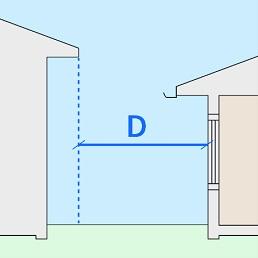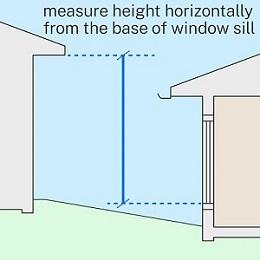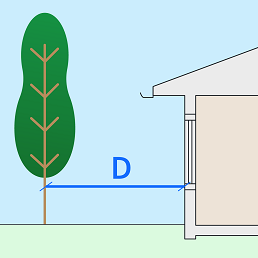BASIX considers overshadowing from:
- existing permanent buildings, but not outhouses, sheds or temporary structures;
- parts of your proposed building;
- a future building on an adjacent site, if it has an approved DA or CDC; or
- existing vegetation, if it is subject to planning control for removal.
Note: You must specify overshadowing if it is present.
Overshadowing will increase the estimated heating load and reduce the cooling loads to different degrees depending on the level of obstruction and climate zone.
Only specify overshadowing if there is an obstruction directly in front of the centre of the base of the window in plan and elevation. That is, if you were to look out the window, the obstruction would be directly in front and not wholly below or to the side. If there is a large obstruction offset to the side and you want to get the benefit of the obstruction, consider using the Simulation method.
For existing vegetation, overshadowing can be specified if it is directly in front of the window, or where there is a bare tree trunk in front of the window and the canopy is above the plane of the window.
You will need to know:
| distance (away) |
|
|---|---|
| height |
|

Select the distance and height range that best describes the overshadowing

Select the distance and height range that best describes the overshadowing

Select the distance and height range that best describes the overshadowing